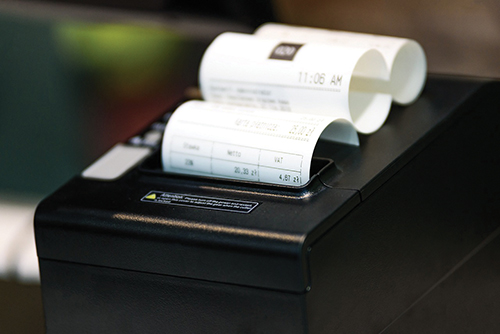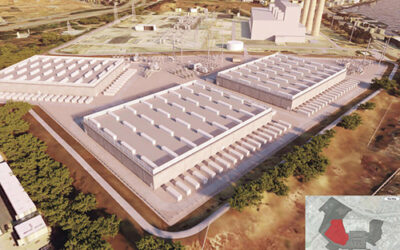San Luis Obispo County’s roads need help, and if the county is to see relief from potholes, it needs to help itself.
The San Luis Obispo Council of Governments, the countywide agency that doles out transportation monies from the State and Federal Governments, is pushing a proposal for a sales tax hike of 0.5 % to be included on the November General Election Ballot.
Acting County Administrative Officer, Rebecca Campbell, said, “Transportation funding for future infrastructure falls well short of the need, as demonstrated in the 2023 SLOCOG Regional Transportation Plan [RTP], which projects a shortfall of $2.3 billion for regional transportation projects and programs, including a shortfall of $400 million for needed pavement maintenance alone.”
As with many governmental things, the available tax monies aren’t cutting the mustard. “Tax revenues,” Campbell said, “traditionally used for improvement, operation, and maintenance of public transportation infrastructure have not kept pace with needs and escalating construction costs. Existing State and Federal funding are based upon an antiquated ‘gas tax’ system of cents per gallon of fuel.”
The issue is that the gas taxes were set up at a time when cars used a lot more fuel and the government wasn’t pushing so hard for everyone to buy get electric vehicles, which don’t use gas or diesel fuel and pay no gas taxes.
“The system,” Campbell said, “predated the proliferation of miles per gallon improvements to vehicles, hybrids, ethanol fuels, and electric vehicles. While the cents per gallon fuel tax for the State is fixed to inflation, EVs [less than 20% of new car sales in California] will erode the total gallons purchased, decreasing the tax revenues collected. Further, the Federal gas tax has had no adjustment in over 30 years; thus, available revenue from fuel taxes have not kept up, and will only diminish over time.”
The State in 2017 passed Senate Bill 1 (SB 1), which increased the fuel taxes and DMV registration fees, among other tax hikes, generates some $5 billion statewide and about $1.2 million annually in SLO County and is used for street repair projects. SB 1 helps but apparently it too isn’t going far enough.
“This additional revenue has been helpful,” Campbell said, “however, the costs for needed road maintenance and transportation improvement projects and programs of most cities and counties still often exceed the resources available.”
What do cities and counties do when tax revenues flat line? They seek more taxes.
“To address these issues,” Campbell said, “many counties and cities in California have chosen to tax themselves for transportation services and infrastructure and not rely solely on the State and Federal funding sources that can be volatile and unreliable. A dedicated local transportation sales tax has been approved in 25 counties in California.” There are 58 total counties in California and these so-called, “Self-help Counties” represent about 89% of the entire state’s population.
With tax revenues falling behind pace to fix the roads, the Self-help Counties can be more competitive, especially with grants they must compete for.
“Local transportation sales tax measures,” Campbell said, “can provide regional and local authorities with access to a stable funding source to allow for delivery of timely, cost-efficient transportation improvements to their communities, and provide additional leverage and ‘local match’ contributions to compete for outside state and federal grant funding.”
She added that passing a local sales tax for transportation needs, could give SLO County a leg up on its competitors for tax dollars.
“Adding San Luis Obispo County to this list,” she said, “ would help unlock hundreds of millions of dollars in additional transportation funding, guaranteeing, and delivering much-needed transportation improvements and repairs for our residents and to our communities.”
The SLOCOG Board, in February, told its staff to go out into the county and make the pitch for support from to city council, as well as the Board of Supervisors, which holds five seats on the SLOCOG Board of Directors (the others are filled by one representative from each incorporated city and one special district representative).
As a special tax designated for use on transportation, the sales tax hike needs two-thirds support of voters, or 67% to pass. It’s a steep hill to climb and the last time it was tried, it failed to garner enough support, albeit losing by a nose.
“A previous half-cent transportation sales tax measure [Measure J] was presented to San Luis Obispo County voters in 2016,” Campbell said, “and received 66.3% support, just shy of the 66.67% [2/3rds] super-majority support threshold required for special tax measures in California.”
She said Measure J’s loss cost SLO County big time. “With the failure of Measure J,” she said, “the region lost out on over $180 million in funding over the last six years, which could have easily doubled by leveraging these funds towards competitive State and Federal grants.”
The roads are not getting any better and Campbell said it was time to try again for the sales tax hike.
“Transportation conditions and needs have not notably improved in the region since 2016,” she said, “while transportation funding through gas tax revenue faces its latest challenge with a growing share of electric vehicles.”
SLOCOG’s February vote to start lobbying the cities and County, and presenting a proposed “investment plan and funding distribution formula.”
It would include so-called “safeguards” that would lock in the uses for this money. And while the State can confiscate tax revenues from things like property taxes and DMV fees, and has done so in the past to balance the State budget, locally passed sales taxes at this time can’t be touched.
“Proposed safeguards with this measure,” Campbell said, “include a required 20-year sunset date, independent auditing and reporting, a cap on allowable administrative costs, and requirement for an independent taxpayer oversight committee.”
SLOCOG’s plans is for three distinct uses for this money, projected to raise about $35 million a year, they are:
• Twenty-year sunset clause;
• Raise $35 million a year and $700 million over 20 years; and,
• Having money available to leverage State and Federal grants that require local matches.
SLOCOG also has a distribution scheme in the works:
• Divide the County into four regions (as defined in SLOCOG’s Transportation Plan} for allocation — North Coast, South County, Central County and North Coast;
• Some two-thirds (66%) of each region’s allocation would be distributed by population for local projects — plus a $3 million increase to the four smallest cities with the remaining 34%.
Eligible uses include road repairs and “community road safety and congestion improvements.”
It could also be used for safety improvements on regional roads (like South Bay Boulevard or LOVR on the North Coast), and “mobility for all” projects that include public transit, senior services and “active transportation.”
But on the North Coast, Morro Bay is the lone “city” and all other communities — Los Osos, Cayucos, Cambria and San Simeon, are unincorporated towns. Nevertheless, those towns would also get funding, with projects going through County Supervisors and County Public Works.
“Unincorporated areas and communities would be guaranteed a population share of their sub-region funds for local road repairs, safety improvements, congestion improvements, safe routes to school, local interchanges, downtown improvements, etc.,” Campbell said.
As it’s laid out now, the North Coast would be eligible to get $45 million (over 20 years); North County $61 million; South County $58 million; and Central County Communities $25 million. It should be noted that the Central County is entirely the City of San Luis Obispo, under SLOCOG’s plan.
The SLOCOG staff had yet to make its pitch to the Morro Bay City Council and a few other bodies to get comments and drum up support, but the plan is to return to the SLOCOG Board May 1 with the results of its lobbying efforts. If it all continues as it has, the issue should appear on the November Ballot and voters, who pay these taxes, will have the final say.
It should be noted that in Morro Bay, there is already a 1.5% local sales tax that is used to support public safety — police and fire departments — street and storm drain repairs. That tax, plus the State’s 7.25% sales taxes (total of 8.75%) would climb to 9% if this proposal were to pass.




